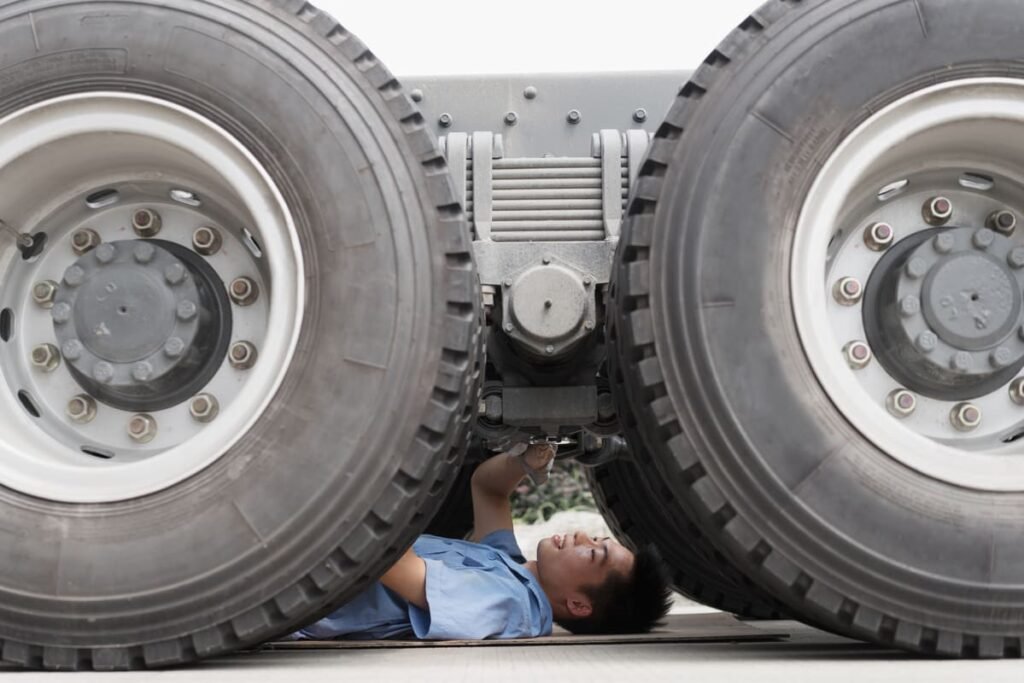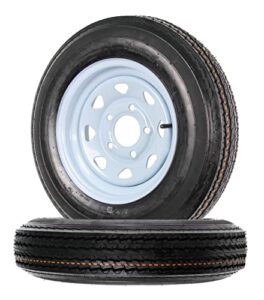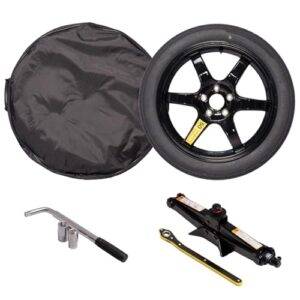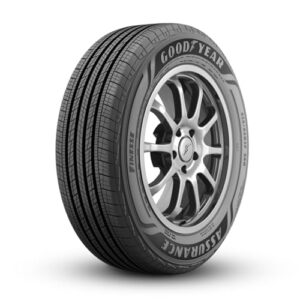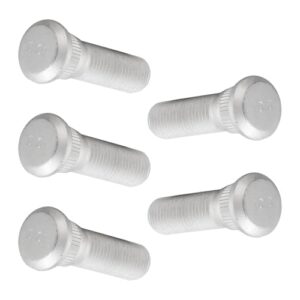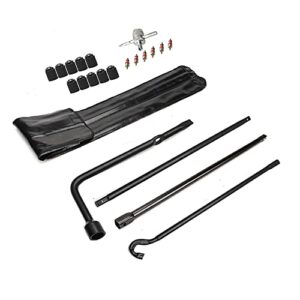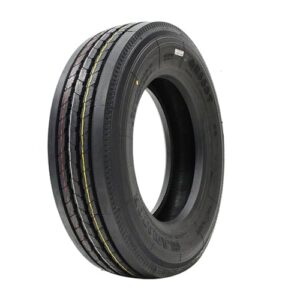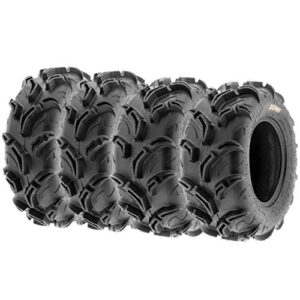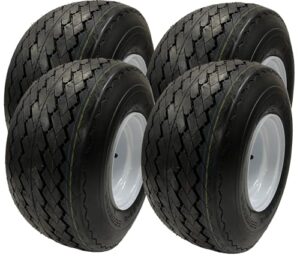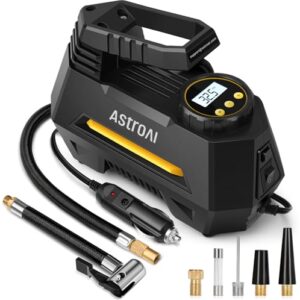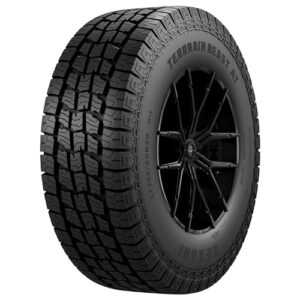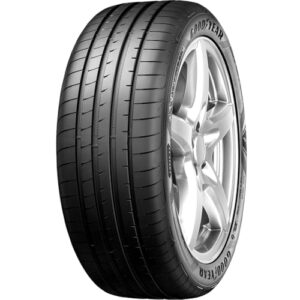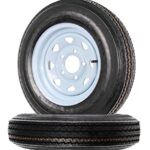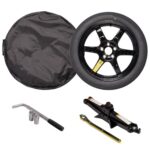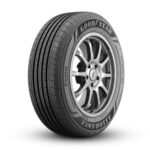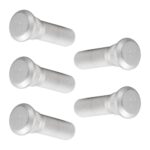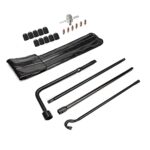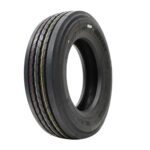Select tires with low rolling resistance and proper inflation levels to Increase fuel efficiency. Opt for tires labeled as fuel-efficient.
Choosing the right tires can significantly impact fuel efficiency. Low rolling resistance tires reduce the energy needed to maintain motion, thus saving fuel. Properly inflated tires further improve this efficiency by reducing drag. Fuel-efficient tires are often marked with specific labels, making them easier to identify.
Besides fuel savings, these tires also contribute to reduced emissions, promoting an eco-friendly drive. Investing in fuel-efficient tires not only benefits the environment but also saves money on fuel costs. Prioritize tire maintenance and regular checks to ensure optimal performance and longevity.
Introduction To Fuel-efficient Tires
Fuel-efficient tires help save money on gas. They also reduce carbon emissions. Choosing the right tire can make a big difference. It is important to understand how tires affect fuel efficiency. This guide will help you select the best tires.
Importance Of Tire Selection
The right tires can improve your car’s performance. Good tires provide better grip and safety. Poor tire choices can hurt fuel economy. Selecting the right tires is essential for your car’s efficiency.
Impact On Fuel Savings
Tires affect how much fuel your car uses. Efficient tires can save a lot of money on gas. They reduce the rolling resistance of the car. Lower rolling resistance means the car needs less energy to move. This leads to better fuel efficiency.
| Type of Tire | Fuel Efficiency |
|---|---|
| Regular Tires | Moderate |
| Fuel-Efficient Tires | High |
Here are a few tips for selecting fuel-efficient tires:
- Check the tire label for fuel efficiency ratings.
- Look for tires with low rolling resistance.
- Opt for tires with good tread patterns.
- Choose the right size for your vehicle.
Follow these tips to find the best tires for your car. Make sure to prioritize fuel efficiency. This will save you money and help the environment.

Types Of Fuel-efficient Tires
Choosing the right tires can save you money on fuel. Fuel-efficient tires are designed to reduce the energy your car uses. There are several types of tires that can help you achieve this goal. Below, we explore some of the best options.
Low Rolling Resistance Tires
Low Rolling Resistance Tires are designed to reduce energy loss. This means your car uses less fuel to move. Here are some key features:
- Special Tread Design: Less friction with the road.
- Lightweight Materials: Reduces the tire’s weight.
- Optimized Shape: Lowers the drag force.
These tires can be a bit more expensive. But the fuel savings can make up for the cost.
Eco-friendly Tire Options
Eco-Friendly Tire Options are made from sustainable materials. They aim to reduce the environmental impact. Key features include:
- Recycled Rubber: Uses less new material.
- Natural Oils: Replaces petroleum-based oils.
- Bio-based Polymers: Reduces carbon footprint.
These tires not only save fuel but also help the planet.
| Type | Key Features |
|---|---|
| Low Rolling Resistance Tires |
|
| Eco-Friendly Tire Options |
|
Selecting the right tire can make a big difference. Keep these types in mind for better fuel efficiency.
Factors Affecting Tire Efficiency
Choosing the right tires can save you money on fuel. Various factors influence tire efficiency, impacting fuel consumption. Understanding these elements helps you make informed decisions.
Tire Tread Patterns
Tire tread patterns play a crucial role in fuel efficiency. Tires with fewer grooves have less rolling resistance. This allows your vehicle to move more smoothly, using less fuel.
Consider these key tread patterns:
- Slick Tread: Minimal grooves, best for fuel economy.
- Symmetrical Tread: Balanced performance, suitable for most vehicles.
- Asymmetrical Tread: Combines fuel efficiency with better handling.
Choose a tread pattern that suits your driving needs while promoting fuel efficiency.
Tire Weight And Materials
Tire weight significantly impacts fuel efficiency. Lighter tires reduce the energy needed to move the vehicle. Opt for tires made from advanced materials like silica-based compounds. These materials reduce weight while maintaining durability.
To help you choose, here’s a comparison of common tire materials:
| Material | Weight | Fuel Efficiency |
|---|---|---|
| Silica-based | Light | High |
| Rubber | Moderate | Medium |
| Heavy-duty compounds | Heavy | Low |
Choosing lighter tires with efficient materials can lead to significant fuel savings.
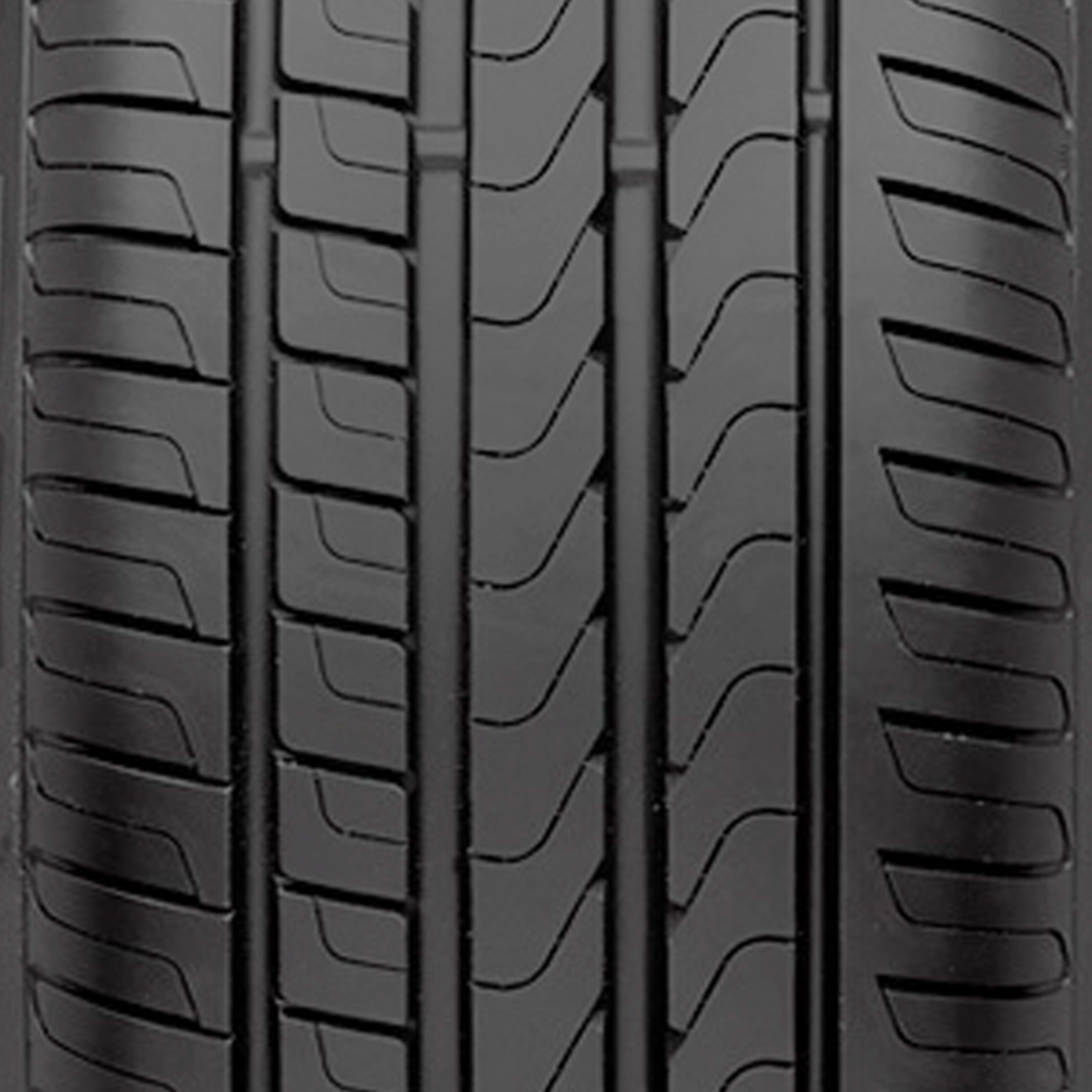
Tire Size And Fuel Economy
Selecting the right tires can improve your car’s fuel efficiency. The tire size plays a crucial role in this. Different tire sizes affect how your car consumes fuel. Understanding the impact of tire size can help you make an informed decision.
Optimal Tire Dimensions
Choosing the optimal tire dimensions is essential for fuel efficiency. Smaller tires generally reduce rolling resistance. This can lead to better fuel economy. On the other hand, larger tires might provide better traction but can increase fuel consumption.
| Tire Size | Rolling Resistance | Fuel Efficiency |
|---|---|---|
| Small | Low | High |
| Medium | Medium | Moderate |
| Large | High | Low |
A balance between tire size and other factors like grip and comfort is vital. Always refer to your car’s manual for recommended tire sizes.
Effect Of Tire Width
Tire width also affects fuel economy. Wider tires have more contact with the road. This increases rolling resistance and reduces fuel efficiency. Narrower tires, in contrast, have less road contact. This reduces rolling resistance and improves fuel economy.
- Wider tires: More road contact, higher rolling resistance.
- Narrower tires: Less road contact, lower rolling resistance.
Choosing the right tire width can make a noticeable difference. It is important to strike a balance between fuel efficiency and other driving needs.
Proper Tire Maintenance
Keeping your tires in good shape is essential for fuel efficiency. Proper tire maintenance ensures your vehicle runs smoothly and uses less fuel. Regular care can extend the life of your tires and save money on gas.
Regular Tire Inflation
Check tire pressure monthly. Underinflated tires reduce fuel efficiency. Overinflated tires wear unevenly. Use a reliable tire gauge. Find the recommended pressure in your vehicle’s manual. Properly inflated tires improve gas mileage.
Tips for checking tire pressure:
- Check when tires are cold.
- Use the same gauge each time.
- Adjust pressure as needed.
Tire Rotation And Alignment
Rotate your tires every 6,000 to 8,000 miles. Even wear helps maintain fuel efficiency. Follow the rotation pattern in your vehicle’s manual. This ensures a smooth ride and better gas mileage.
Get your tires aligned at least once a year. Misaligned tires cause uneven wear. This reduces fuel efficiency. Proper alignment keeps your vehicle running straight. It also improves handling and safety.
| Maintenance Task | Frequency | Benefits |
|---|---|---|
| Check Tire Pressure | Monthly | Better fuel efficiency, longer tire life |
| Rotate Tires | Every 6,000-8,000 miles | Even wear, smooth ride |
| Align Tires | Annually | Improved handling, better fuel efficiency |
Keep your tires in top condition. This helps save money on gas. Proper maintenance ensures a safer, smoother ride.
Choosing The Right Tire Brand
Choosing the right tire brand is crucial for fuel efficiency. The right brand can save you money on gas and reduce your carbon footprint. This section will guide you through selecting a brand that increases fuel efficiency.
Reputable Tire Manufacturers
Reputable tire manufacturers offer high-quality products. Here are some trusted brands known for fuel-efficient tires:
- Michelin – Known for their energy-saving technology.
- Bridgestone – Offers low rolling resistance tires.
- Goodyear – Provides fuel-efficient tire options.
- Continental – Renowned for their eco-friendly tires.
Choosing from these brands ensures you get reliable, fuel-efficient tires.
Comparing Fuel Efficiency Ratings
Fuel efficiency ratings are essential when selecting tires. These ratings help you compare different tires based on their performance. Here is a quick comparison table:
| Brand | Model | Fuel Efficiency Rating |
|---|---|---|
| Michelin | Energy Saver A/S | A |
| Bridgestone | Ecopia EP422 Plus | A |
| Goodyear | Assurance Fuel Max | B |
| Continental | TrueContact Tour | A |
Use this table to choose a tire with the best fuel efficiency rating. A higher rating means better fuel savings.
Always check the tire’s label for its fuel efficiency rating. It helps you make an informed decision.
Cost Vs. Savings Analysis
Choosing the right tires can greatly impact your car’s fuel efficiency. A detailed cost vs. savings analysis helps you make an informed decision. Let’s break it down into initial investment costs and long-term fuel savings.
Initial Investment Costs
New tires can vary significantly in price. The initial investment costs depend on the brand, type, and size of the tire.
- Brand: Premium brands often cost more but offer better quality.
- Type: All-season tires are usually cheaper than specialized tires.
- Size: Larger tires generally cost more than smaller ones.
Here’s a quick comparison of typical tire costs:
| Tire Type | Average Cost Per Tire |
|---|---|
| Economy | $50 – $80 |
| Mid-Range | $80 – $150 |
| Premium | $150 – $300 |
Long-term Fuel Savings
Fuel-efficient tires can lead to significant long-term savings on fuel costs. These tires reduce rolling resistance, improving fuel economy.
Consider these potential savings:
- Lower Fuel Consumption: Fuel-efficient tires can save up to 10% on fuel.
- Extended Tire Lifespan: High-quality tires may last longer, reducing replacement costs.
- Reduced Maintenance: Better tires can mean fewer repairs and lower upkeep costs.
Here’s an example of potential savings over five years:
| Fuel Efficient Tires | Standard Tires |
|---|---|
| Savings on Fuel: $300 – $500 | Higher Fuel Costs |
| Extended Lifespan: 20,000 miles | Shorter Lifespan: 15,000 miles |
| Lower Maintenance Costs | Higher Maintenance Costs |
Investing in fuel-efficient tires may seem expensive at first. But, the long-term savings can be substantial.
Additional Tips For Maximizing Fuel Efficiency
Choosing the right tires for fuel efficiency is important. But, there are additional tips that can help you save even more fuel. These tips include adjusting driving habits and managing the vehicle load effectively.
Driving Habits
How you drive can affect fuel efficiency. Here are some tips:
- Avoid rapid acceleration: Smooth starts save fuel.
- Maintain a steady speed: Use cruise control on highways.
- Limit idling: Turn off the engine if stopped for long.
- Plan your trips: Combine errands to avoid multiple short trips.
Vehicle Load Management
The weight your car carries impacts fuel use. Follow these tips:
- Remove unnecessary items: Less weight means better fuel efficiency.
- Use roof racks wisely: They create drag and lower fuel efficiency.
- Check tire pressure: Properly inflated tires improve fuel efficiency.
| Tip | Fuel Efficiency Impact |
|---|---|
| Avoid rapid acceleration | Reduces fuel consumption by up to 20% |
| Maintain steady speed | Improves fuel efficiency by up to 15% |
| Remove unnecessary items | Each 100 lbs can reduce MPG by up to 2% |
By following these additional tips, you can maximize your fuel efficiency. This not only saves money but also helps the environment.

Frequently Asked Questions
What Tires Give You Better Gas Mileage?
Low rolling resistance tires improve gas mileage. Choose eco-friendly tires designed for fuel efficiency to save on fuel costs.
Which Tire Size Is Better For Fuel Efficiency?
Smaller tires with less rolling resistance improve fuel efficiency. Choose tires with narrower widths and higher pressure ratings for better mileage.
Which Tyre Is Best For Fuel Efficiency?
The best tyre for fuel efficiency is the Michelin Energy Saver. It reduces rolling resistance, improving gas mileage.
Do Fuel-efficient Tires Make A Difference?
Yes, fuel-efficient tires make a difference. They reduce rolling resistance, improve fuel economy, and lower emissions. This helps save money on gas and benefits the environment.
Conclusion
Selecting the right tires can significantly boost fuel efficiency. Prioritize low rolling resistance, proper inflation, and regular maintenance. Choose tires designed for fuel savings to maximize benefits. Remember, investing in quality tires can save you money on fuel in the long run.
Make smart choices for a more economical and eco-friendly drive.


